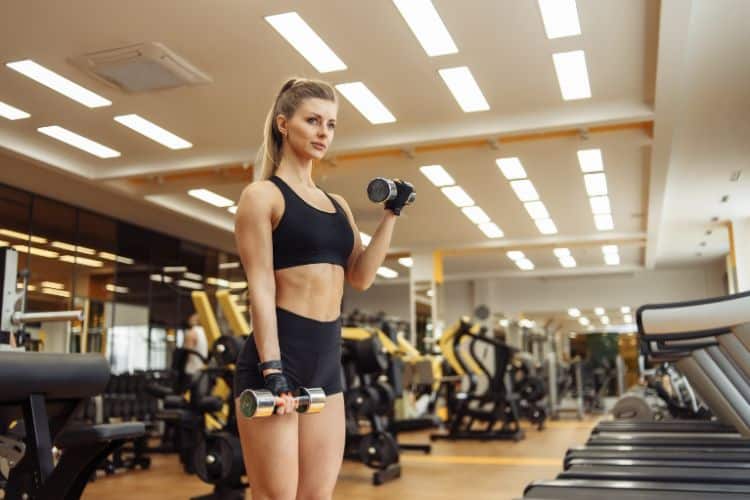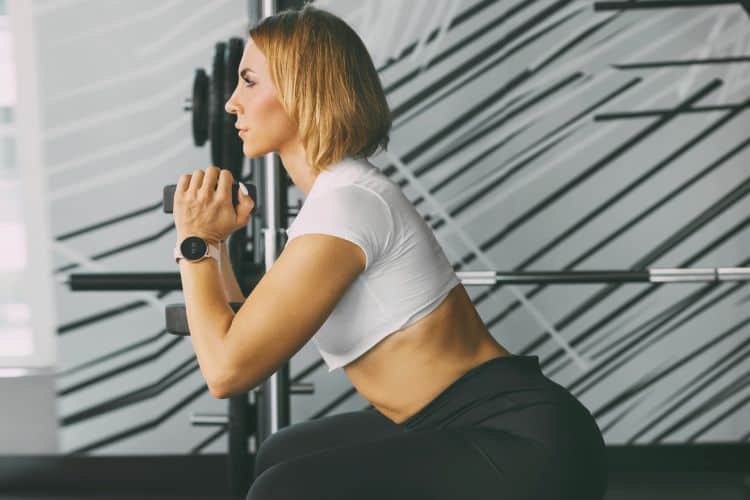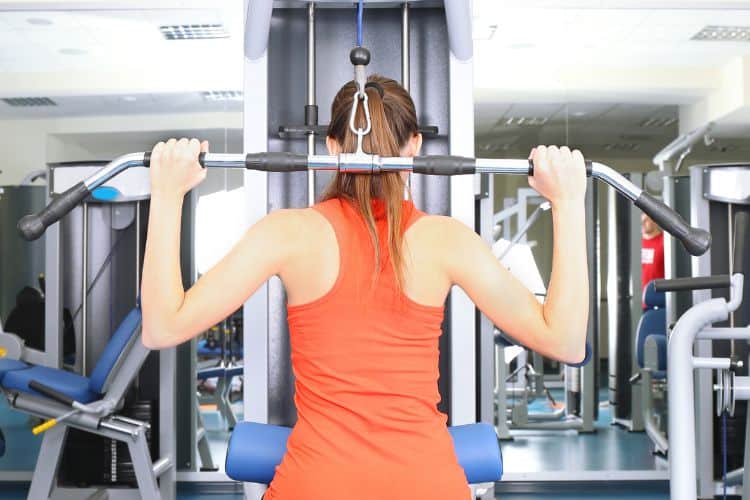Sign up for workout ideas, training advice, reviews of the latest gear and more.






A strong back is essential for posture, core stability, strength, and everyday movement—yet it’s one of the most overlooked muscle groups in most workout routines. Whether you’re sitting at a desk all day, lifting weights regularly, or simply looking to tone and sculpt your upper body, a short and effective 20-minute back workout can deliver incredible results. This targeted routine strengthens the lats, rhomboids, traps, spinal erectors, and core, helping you improve alignment, reduce pain, and build a balanced, confident physique. In this guide, you’ll learn how to structure the perfect 20-minute workout for maximum efficiency, plus form cues and movement tips to get the most out of every minute.
Time-efficient workouts work because they keep your intensity high and your rest periods short. In just 20 minutes, you can target the entire back through a combination of compound and isolation movements that activate major muscle groups while improving posture and strength. This routine fits easily into a busy schedule and is ideal for beginners, intermediates, and advanced lifters because you can tailor the intensity by adjusting reps, weights, or tempo. When performed consistently, a 20-minute back workout helps increase muscle definition, reduces the chance of injury, and supports better overall performance during strength training and cardio exercises.
A great 20-minute back workout should include four key elements: a warm-up, compound lifts, isolation exercises, and a brief finisher to burn out the muscles. This combination ensures you’re improving strength, building muscle, enhancing mobility, and increasing mind-muscle connection. You’ll move through each section with purpose, keep your form sharp, and minimize unnecessary rest. Even if you only have 20 minutes, this structure ensures a full and thorough back training session.
A fast warm-up turns on your back muscles, increases blood flow, and prevents strain. Spend two minutes doing these dynamic movements:
Arm Circles (30 seconds)
Rotate forward and backward to warm the shoulders and upper back.
Cat-Cow (30 seconds)
Wake up the spine and engage the core.
Scapular Retractions (30 seconds)
Activate the mid-back muscles crucial for posture.
Light Band Pull-Apart or Lat Stretch (30 seconds)
Open the chest and prepare the lats for pulling exercises.
Below is a complete 20-minute routine broken into timed blocks. You can complete it with dumbbells, a barbell, or bodyweight options—making it perfect for home or gym training.
During the first five minutes, we target the muscles that help keep your shoulders pulled back and your posture aligned. These moves focus on the rhomboids, traps, and rear delts.
The bent-over row is the foundation of back training. It builds strength through the lats, traps, rhomboids, and lower back.
How to Do It:
Hinge forward at the hips with a flat back, pull the weights toward your ribcage, and squeeze your shoulder blades together at the top.
Timing:
Perform 40 seconds of work + 20 seconds rest × 2 rounds.
Benefits:
Strengthens the entire back and teaches you proper pulling mechanics.
Face pulls correct posture, engage the rear delts, and strengthen the small stabilizer muscles of the upper back.
How to Do It:
Pull the band toward your face while keeping elbows high. Pause and squeeze.
Timing:
40 seconds on + 20 seconds rest × 2 rounds.
A vital bodyweight exercise for strengthening the lower back and spinal erectors.
How to Do It:
Lift your arms and legs off the ground while keeping your chest lifted. Hold for 30 seconds, rest for 15, then hold again.
This part of the workout targets the large muscle groups responsible for pulling, lifting, and stabilizing. These exercises help sculpt a toned, defined mid-back.
This unilateral movement helps correct strength imbalances and allows deeper muscle activation.
How to Do It:
Place one knee on a bench, hinge forward, and pull the weight toward your hip.
Timing:
1 minute right side
1 minute left side
1 minute both arms alternating
Benefits:
Targets the lats and improves symmetry and muscle control.
If you have a machine, use the cable for pulldowns. If working at home, modify with inverted rows or assisted pull-ups.
How to Do It:
Pull the bar (or your body) downward while keeping elbows tight and core engaged.
Timing:
40 seconds on + 20 seconds rest × 2 rounds.
This bodyweight exercise strengthens the entire posterior chain.
How to Do It:
Lie face down and sweep your arms in an arc like making a snow angel. Lift chest and legs slightly.
Timing:
45 seconds of work + 15 seconds rest × 2 rounds.
The lower back is crucial for stability, strength, and movement control. These exercises build durability, prevent injury, and strengthen your overall foundation.
Use dumbbells, a barbell, or a kettlebell. The hinge pattern targets the hamstrings and spinal erectors while reinforcing proper form.
How to Do It:
Stand with feet hip-width apart, hinge down, and push through heels to return upright.
Timing:
45 seconds work + 15 seconds rest × 2.
This exercise improves balance, stability, and core control while strengthening lower back muscles.
How to Do It:
Extend the opposite arm and leg while keeping the hips level. Squeeze at the top.
Timing:
40 seconds each side + 40 seconds alternating.
We end with a powerful 2-minute burnout to maximally target the entire back and ensure muscle fatigue for growth and definition.
This move hits your lats, core, shoulders, and arms simultaneously.
How to Do It:
Start in a plank with dumbbells and row one arm at a time.
Timing:
40 seconds of work
20 seconds rest
40 seconds of work
Even in a short time frame, this routine delivers powerful benefits:
Strengthening your mid-back helps counteract hours of sitting or screen time.
Most back exercises train the core, improving balance and stability.
Training the posterior chain helps support the spine and prevent aches.
A defined, sculpted back enhances the shape of your shoulders, waistline, and posture.
Back strength improves performance in daily activities like lifting, carrying, and standing upright.
Avoid rounding your back during rows or deadlifts.
Pull with power, lower with slow control.
A strong isometric contraction improves muscle fiber recruitment.
Your back—not your biceps—should do most of the work.
Progressive overload ensures continued gains.
● Use light dumbbells or resistance bands
● Shorter work periods (30 seconds)
● Reduce volume if needed
● Follow the timed structure exactly
● Increase weight moderately
● Add slow negatives for more challenge
● Add 5–10 lbs to each movement
● Add pauses or tempo control
● Increase work periods to 50 seconds
Finish with these stretches:
● Child’s Pose – 30 seconds
● Cross-Arm Shoulder Stretch – 30 seconds
● Lat Stretch (Overhead Lean) – 30 seconds
● Seated Forward Fold – 30 seconds
This reduces soreness and supports mobility.
This fast-paced, effective 20-minute back workout builds strength, enhances posture, and sculpts your entire upper body—all within a short training window. With a balanced mix of compound movements, isolation exercises, stability training, and a strong finisher, you’ll see noticeable results in how your back looks and feels. Whether you’re training at home or in the gym, this routine is easy to follow, beginner-friendly, and adaptable for all fitness levels. Practice consistently 2–3 times per week for optimal results.
If you’re committed to transforming your back in just 20 minutes, don’t stop there—check out our full-body routines to keep your program balanced and effective. Just next door you’ll find our 45-Minute Full Body Dumbbell Blast to build overall strength, or drop in on the The 20-Minute Barbell Blitz: The Only Full Body Workout for extra power. For targeted upper-body focus, our 30-Minute Upper Body Dumbbell Circuit complements back training with balanced push-work. Want to finish strong? Try the 30 Minute Full Body Resistance Training Workout session to stabilize your new strength foundation. And keep the burn going with the 30-Minute Full Body Dumbbell Superset HIIT — perfect for days when you want high intensity and full-body engagement.
Stay up to date on the latest women’s health, fitness and lifestyle trends and tips.